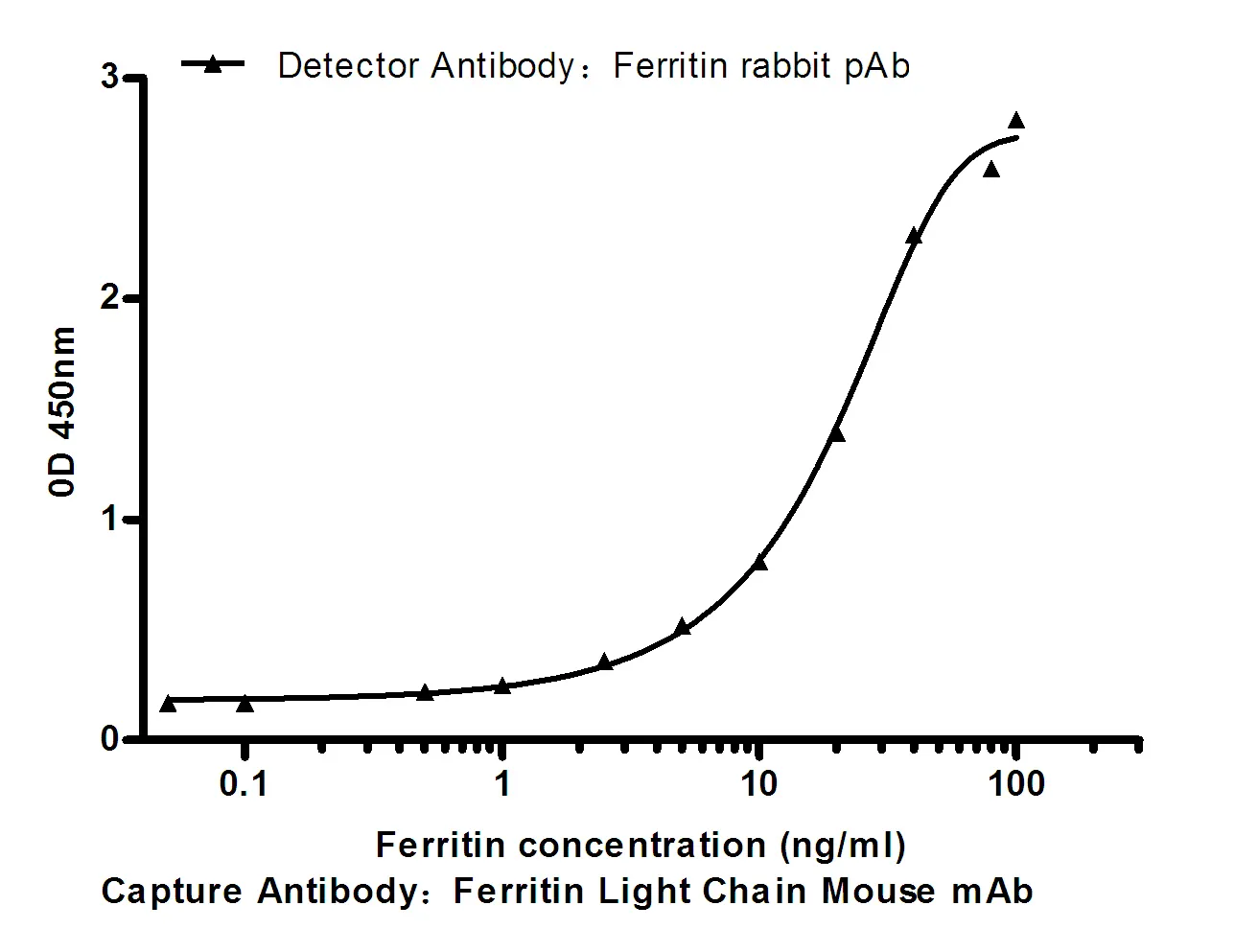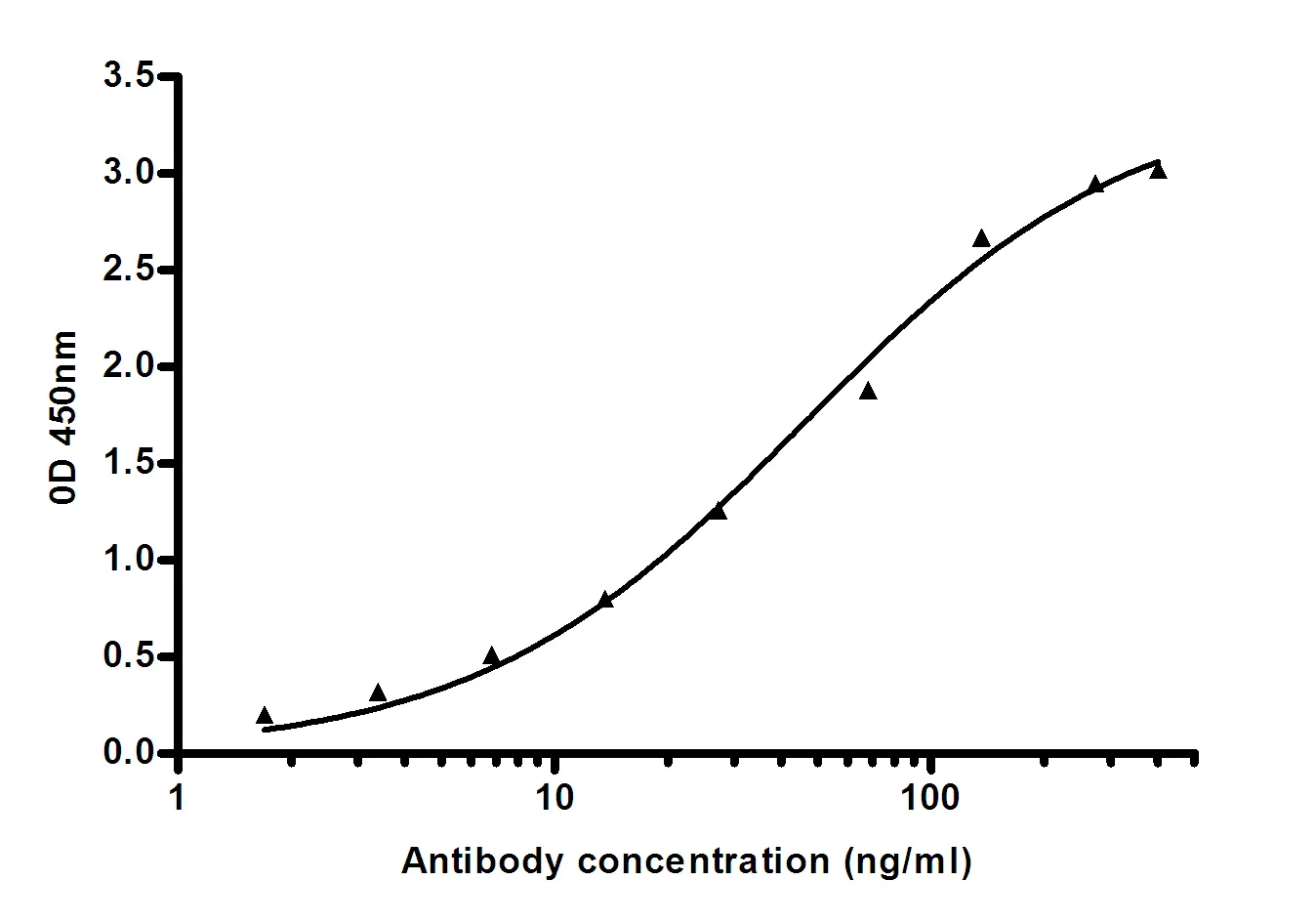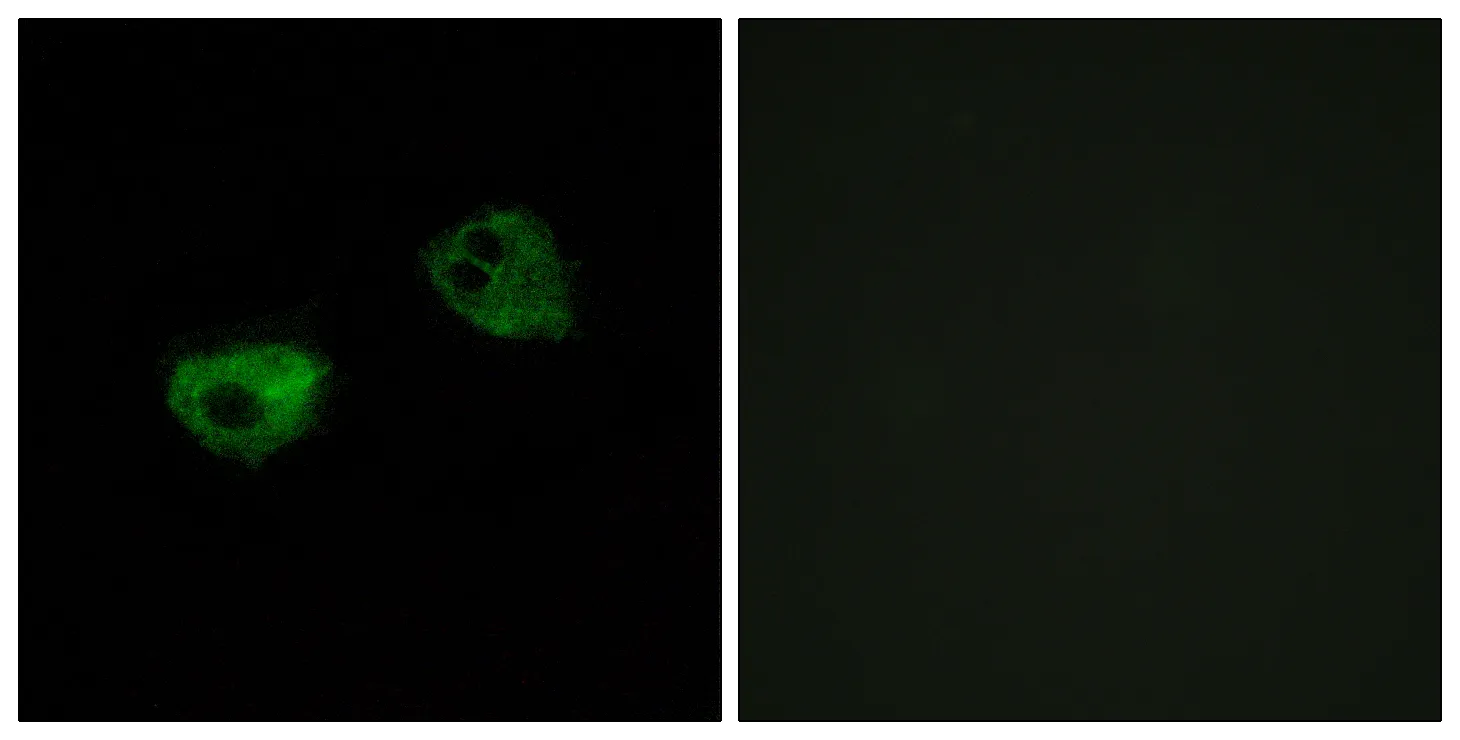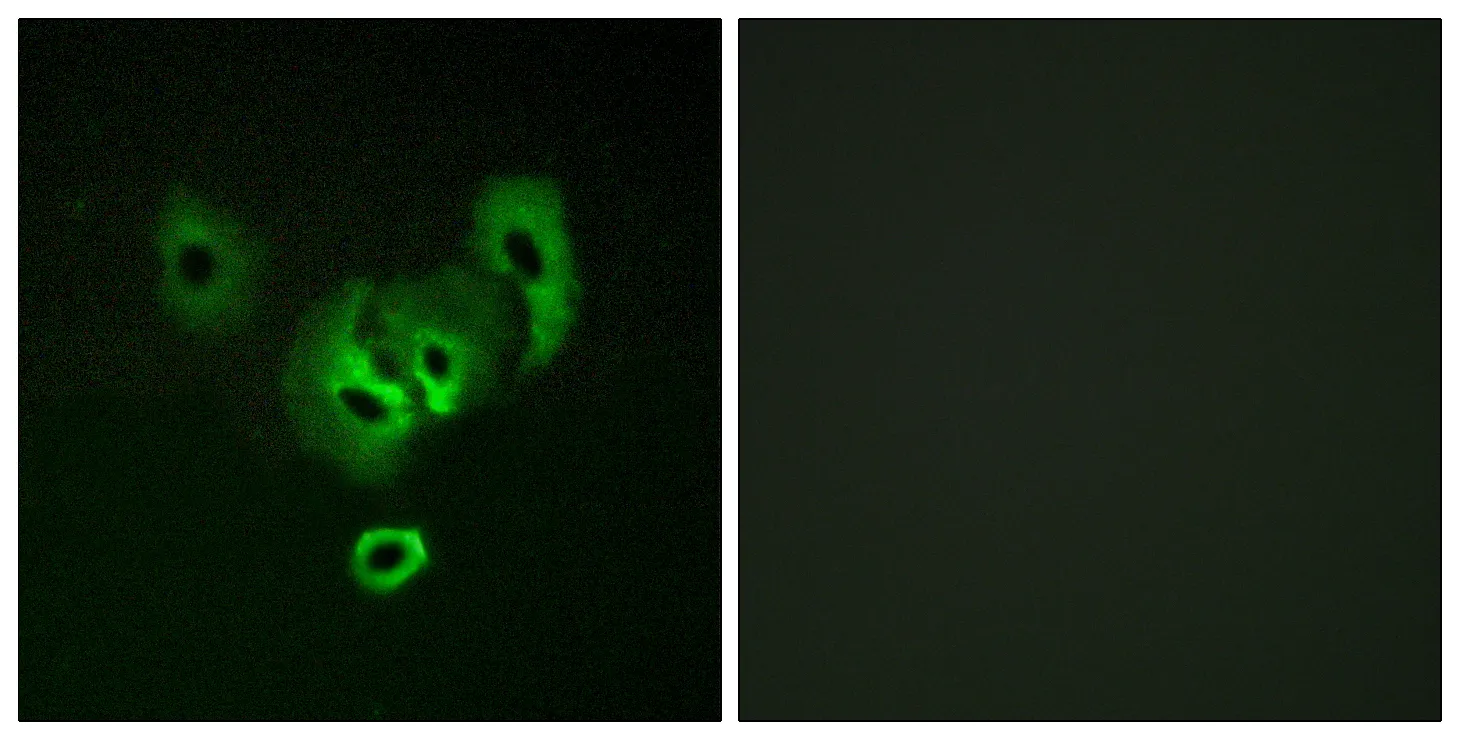Summary
Performance
Immunogen
Application
Background
domain:The SH2 domain preferentially binds phosphopeptides with the consensus sequence Y-[TVI]-X-L and mediates interaction with PDGFRA, PDGFRB, FGRFR1, IL2RB, IL2RG, CD3Z and CRK/CrKII.,function:Adapter protein which regulates several signal transduction cascades by linking activated receptors to downstream signaling components. May play a role in angiogenesis by regulating FGFR1, VEGFR2 and PDGFR signaling. May also play a role in T-cell antigen receptor/TCR signaling, interleukin-2 signaling, apoptosis and neuronal cells differentiation by mediating basic-FGF and NGF-induced signaling cascades. May also regulate IRS1 and IRS2 signaling in insulin-producing cells.,PTM:Phosphorylated upon PDGFRA, PDGFRB, TCR, IL2 receptor, FGRF1 or VEGFR2 activation.,similarity:Contains 1 SH2 domain.,subcellular location:Associates with membrane lipid rafts upon TCR stimulation.,subunit:Interacts with PTPN11 (By similarity). Interacts with phosphorylated 'Tyr-720' of the ligand-activated receptor PDGFRA via its SH2 domain. Interacts with the ligand-activated receptors PDGFRB, FGFR1, KDR/VEGFR2, IL2RB and IL2RG. Interacts with EPS8 and V-SRC. Interacts with GRB2 and GRAP. Interacts with CD3Z. Interacts with tyrosine-phosphorylated LAT upon T-cell antigen receptor activation. Interacts with PLCG1. Interacts with ZAP70, LCP2/SLP-76, VAV1 and GRAP2. Interacts with JAK1 and JAK3. Interacts with PTK2/FAK1. Interacts with CRK/CrKII. Interacts with IRS2.,tissue specificity:Widely expressed.,domain:The SH2 domain preferentially binds phosphopeptides with the consensus sequence Y-[TVI]-X-L and mediates interaction with PDGFRA, PDGFRB, FGRFR1, IL2RB, IL2RG, CD3Z and CRK/CrKII.,function:Adapter protein which regulates several signal transduction cascades by linking activated receptors to downstream signaling components. May play a role in angiogenesis by regulating FGFR1, VEGFR2 and PDGFR signaling. May also play a role in T-cell antigen receptor/TCR signaling, interleukin-2 signaling, apoptosis and neuronal cells differentiation by mediating basic-FGF and NGF-induced signaling cascades. May also regulate IRS1 and IRS2 signaling in insulin-producing cells.,PTM:Phosphorylated upon PDGFRA, PDGFRB, TCR, IL2 receptor, FGRF1 or VEGFR2 activation.,similarity:Contains 1 SH2 domain.,subcellular location:Associates with membrane lipid rafts upon TCR stimulation.,subunit:Interacts with PTPN11 (By similarity). Interacts with phosphorylated 'Tyr-720' of the ligand-activated receptor PDGFRA via its SH2 domain. Interacts with the ligand-activated receptors PDGFRB, FGFR1, KDR/VEGFR2, IL2RB and IL2RG. Interacts with EPS8 and V-SRC. Interacts with GRB2 and GRAP. Interacts with CD3Z. Interacts with tyrosine-phosphorylated LAT upon T-cell antigen receptor activation. Interacts with PLCG1. Interacts with ZAP70, LCP2/SLP-76, VAV1 and GRAP2. Interacts with JAK1 and JAK3. Interacts with PTK2/FAK1. Interacts with CRK/CrKII. Interacts with IRS2.,tissue specificity:Widely expressed.,
Research Area




